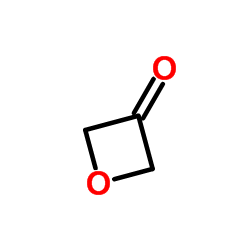[2-(2-THIENYL)-1,3-THIAZOL-4-YL]METHANOL
![[2-(2-THIENYL)-1,3-THIAZOL-4-YL]METHANOL Structure](https://image.chemsrc.com/caspic/241/54986-94-6.png)
[2-(2-THIENYL)-1,3-THIAZOL-4-YL]METHANOL structure
|
Common Name | [2-(2-THIENYL)-1,3-THIAZOL-4-YL]METHANOL | ||
|---|---|---|---|---|
| CAS Number | 54986-94-6 | Molecular Weight | 197.27700 | |
| Density | 1.401g/cm3 | Boiling Point | 388.8ºC at 760 mmHg | |
| Molecular Formula | C8H7NOS2 | Melting Point | 87ºC | |
| MSDS | Chinese USA | Flash Point | 189ºC | |
| Name | (2-thiophen-2-yl-1,3-thiazol-4-yl)methanol |
|---|---|
| Synonym | More Synonyms |
| Density | 1.401g/cm3 |
|---|---|
| Boiling Point | 388.8ºC at 760 mmHg |
| Melting Point | 87ºC |
| Molecular Formula | C8H7NOS2 |
| Molecular Weight | 197.27700 |
| Flash Point | 189ºC |
| Exact Mass | 196.99700 |
| PSA | 89.60000 |
| LogP | 2.36390 |
| Index of Refraction | 1.663 |
Synonym: Section 2 - COMPOSITION, INFORMATION ON INGREDIENTS
Risk Phrases: None Listed. Section 3 - HAZARDS IDENTIFICATION EMERGENCY OVERVIEW
Not available. Potential Health Effects Eye: May cause eye irritation. Skin: May cause skin irritation. May be harmful if absorbed through the skin. Ingestion: May cause irritation of the digestive tract. May be harmful if swallowed. Inhalation: May cause respiratory tract irritation. May be harmful if inhaled. Chronic: Not available. Section 4 - FIRST AID MEASURES Eyes: Flush eyes with plenty of water for at least 15 minutes, occasionally lifting the upper and lower eyelids. Get medical aid. Skin: Get medical aid. Flush skin with plenty of water for at least 15 minutes while removing contaminated clothing and shoes. Ingestion: Get medical aid. Wash mouth out with water. Inhalation: Remove from exposure and move to fresh air immediately. Notes to Physician: Treat symptomatically and supportively. Section 5 - FIRE FIGHTING MEASURES General Information: As in any fire, wear a self-contained breathing apparatus in pressure-demand, MSHA/NIOSH (approved or equivalent), and full protective gear. Extinguishing Media: Use water spray, dry chemical, carbon dioxide, or chemical foam. Section 6 - ACCIDENTAL RELEASE MEASURES General Information: Use proper personal protective equipment as indicated in Section 8. Spills/Leaks: Absorb spill with inert material (e.g. vermiculite, sand or earth), then place in suitable container. Section 7 - HANDLING and STORAGE Handling: Avoid breathing dust, vapor, mist, or gas. Avoid contact with skin and eyes. Storage: Store in a cool, dry place. Store in a tightly closed container. Section 8 - EXPOSURE CONTROLS, PERSONAL PROTECTION Engineering Controls: Use adequate ventilation to keep airborne concentrations low. Exposure Limits CAS# 54986-94-6: Personal Protective Equipment Eyes: Not available. Skin: Wear appropriate protective gloves to prevent skin exposure. Clothing: Wear appropriate protective clothing to prevent skin exposure. Respirators: Follow the OSHA respirator regulations found in 29 CFR 1910.134 or European Standard EN 149. Use a NIOSH/MSHA or European Standard EN 149 approved respirator if exposure limits are exceeded or if irritation or other symptoms are experienced. Section 9 - PHYSICAL AND CHEMICAL PROPERTIES Physical State: Solid Color: brown Odor: Not available. pH: Not available. Vapor Pressure: Not available. Viscosity: Not available. Boiling Point: Not available. Freezing/Melting Point: 87 - 90 deg C Autoignition Temperature: Not available. Flash Point: Not available. Explosion Limits, lower: Not available. Explosion Limits, upper: Not available. Decomposition Temperature: Solubility in water: Specific Gravity/Density: Molecular Formula: C8H7NOS2 Molecular Weight: 197 Section 10 - STABILITY AND REACTIVITY Chemical Stability: Not available. Conditions to Avoid: Incompatible materials. Incompatibilities with Other Materials: Oxidizing agents, acid chlorides. Hazardous Decomposition Products: Nitrogen oxides, carbon monoxide, carbon dioxide, sulfur oxides (SOx), including sulfur oxide and sulfur dioxide. Hazardous Polymerization: Has not been reported Section 11 - TOXICOLOGICAL INFORMATION RTECS#: CAS# 54986-94-6 unlisted. LD50/LC50: Not available. Carcinogenicity: [2-(2-Thienyl)-1,3-thiazol-4-yl]methanol - Not listed by ACGIH, IARC, or NTP. Section 12 - ECOLOGICAL INFORMATION Section 13 - DISPOSAL CONSIDERATIONS Dispose of in a manner consistent with federal, state, and local regulations. Section 14 - TRANSPORT INFORMATION IATA No information available. IMO No information available. RID/ADR No information available. Section 15 - REGULATORY INFORMATION European/International Regulations European Labeling in Accordance with EC Directives Hazard Symbols: Not available. Risk Phrases: Safety Phrases: S 24/25 Avoid contact with skin and eyes. WGK (Water Danger/Protection) CAS# 54986-94-6: No information available. Canada None of the chemicals in this product are listed on the DSL/NDSL list. CAS# 54986-94-6 is not listed on Canada's Ingredient Disclosure List. US FEDERAL TSCA CAS# 54986-94-6 is not listed on the TSCA inventory. It is for research and development use only. SECTION 16 - ADDITIONAL INFORMATION N/A |
| Safety Phrases | S24/25 |
|---|---|
| HS Code | 2934999090 |
|
~37% ![[2-(2-THIENYL)-1,3-THIAZOL-4-YL]METHANOL Structure](https://image.chemsrc.com/caspic/241/54986-94-6.png)
[2-(2-THIENYL)-... CAS#:54986-94-6 |
| Literature: Orr, David; Tolfrey, Alexandra; Percy, Jonathan M.; Frieman, Joanna; Harrison, Zoe A.; Campbell-Crawford, Matthew; Patel, Vipulkumar K. Chemistry - A European Journal, 2013 , vol. 19, # 29 p. 9655 - 9662 |
|
~% ![[2-(2-THIENYL)-1,3-THIAZOL-4-YL]METHANOL Structure](https://image.chemsrc.com/caspic/241/54986-94-6.png)
[2-(2-THIENYL)-... CAS#:54986-94-6 |
| Literature: Orr, David; Tolfrey, Alexandra; Percy, Jonathan M.; Frieman, Joanna; Harrison, Zoe A.; Campbell-Crawford, Matthew; Patel, Vipulkumar K. Chemistry - A European Journal, 2013 , vol. 19, # 29 p. 9655 - 9662 |
|
~% ![[2-(2-THIENYL)-1,3-THIAZOL-4-YL]METHANOL Structure](https://image.chemsrc.com/caspic/241/54986-94-6.png)
[2-(2-THIENYL)-... CAS#:54986-94-6 |
| Literature: Chauvin,P. et al. Bulletin de la Societe Chimique de France, 1974 , p. 2099 - 2104 |
| HS Code | 2934999090 |
|---|---|
| Summary | 2934999090. other heterocyclic compounds. VAT:17.0%. Tax rebate rate:13.0%. . MFN tariff:6.5%. General tariff:20.0% |
| 2-thiophene-4-hydroxymethylthiazole |
| 2-(2-thienyl)-4-thiazolylmethanol |
| Hydroxymethyl-4-<thienyl-2>-2-thiazol |
| 2-(thien-2-yl)-4-thiazolylmethanol |
| (2-thiophen-2-ylthiazole-4-yl)methanol |
| [2-(2-THIENYL)-1,3-THIAZOL-4-YL]METHANOL |
| (2-thiophen-2-yl-thiazol-4-yl)-methanol |




 CAS#:54679-16-2
CAS#:54679-16-2